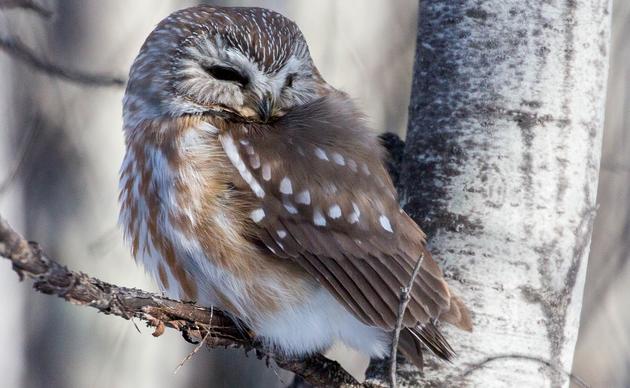"Ki-ki-ki-ki" is a sound you could hear while walking a rural country road or the streets of Manhattan, but one that is getting tougher to catch. This is the call of North America's smallest falcon, the American Kestrel, a widespread bird of prey that has declined significantly in New York in the past 20 years. While habitat loss and competition for nest cavities from other birds, like the non-native European Starling, have fueled this population drop, over the past two years a unique partnership has formed to stop this slide.
In 2009, with support from the TogetherGreen program, Audubon New York, fifteen Audubon chapters, and three of our Nature Centers partnered with the New York State Department of Transportation (DOT) to launch a American Kestrel recovery effort. Currently, a number of Audubon chapters, centers and other partners continue to monitor over 100 boxes throughout the state.
This robin-sized falcon can be found throughout the state and are most common in meadows, pastures, and farm fields, but also live in cities and towns. Kestrels are cavity nesters, preferring holes in dead trees rather than building nests, and favor areas surrounded by large open areas with plenty of hunting perches nearby. Surprisingly, this makes highway signs ideal locations to place nest boxes.
When the project first launched, hundreds of volunteers picked up saws and hammers in an amazing effort to build kestrel boxes, fabricating more than 200 for placement in suitable habitat. Over 150 of the boxes were installed from farm fields by scout troops, to highway signs by DOT employees, and others are being used in educational displays. In the first two years of the project, fifteen boxes resulted in 10 fledged young. As more kestrels are starting to find the boxes, we expect this to increase and we’ve asked our partners to log their data with the Peregrine Fund’s Kestrel project.
Audubon chapters from across the state helped make the project a great success. The Onondaga Audubon Society placed new boxes in Green Lakes State Park as part of a larger effort to enhance grassland habitat at the park. Delaware-Otsego Audubon trained new volunteer monitors who fell in love with a nesting family in one of their boxes. They saw tremendous nesting success with six nests and three fledglings. At the Jamestown Audubon Center in western New York, volunteers kept track of the birds, and a professional banded the young. Watch this video for more about the project and Jamestown Audubon’s efforts.
To learn more, download our kestrel fact sheet here, or contact Laura McCarthy.
How you can help, right now
Donate to Audubon
Help secure the future for birds at risk from climate change, habitat loss and other threats. Your support will power our science, education, advocacy and on-the-ground conservation efforts.




